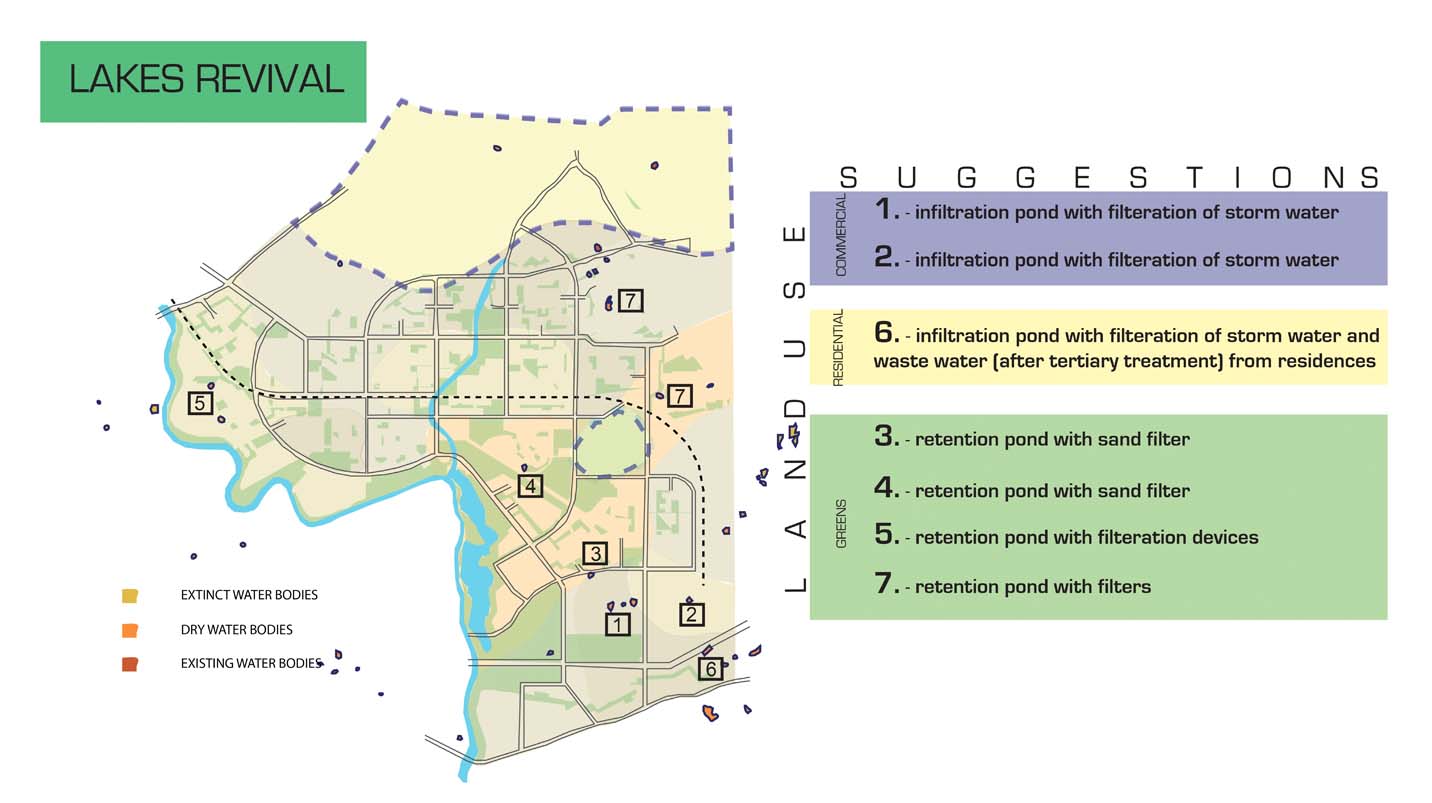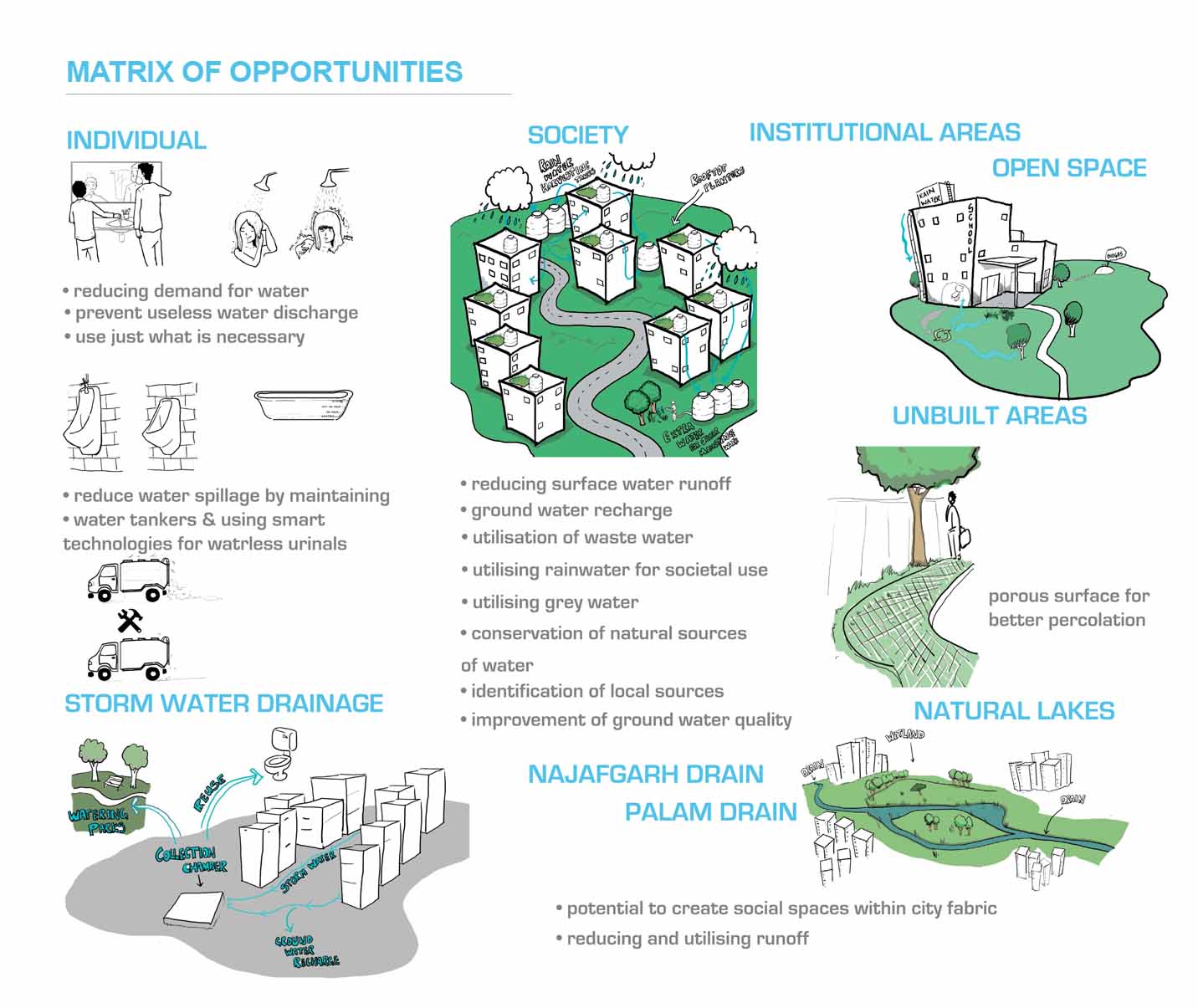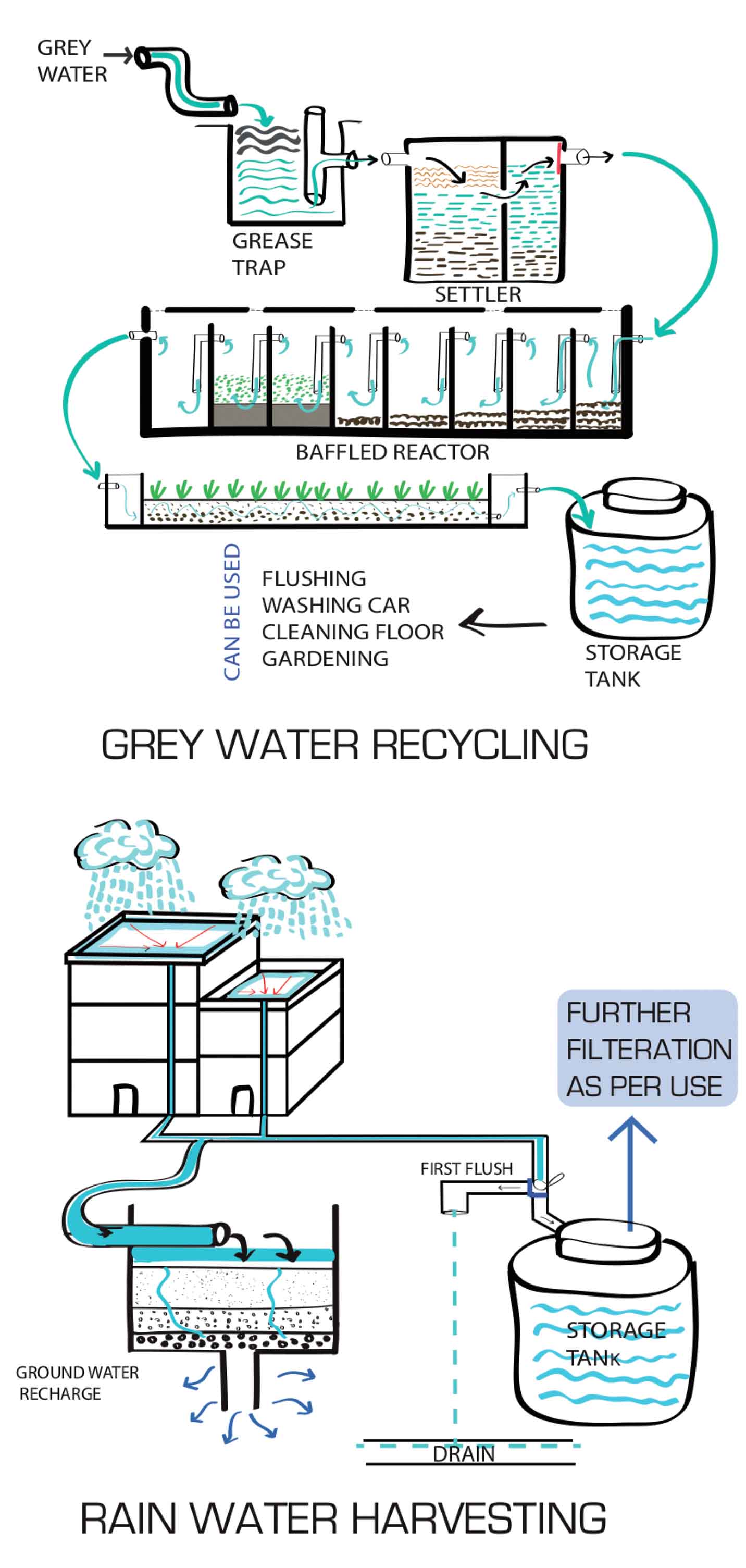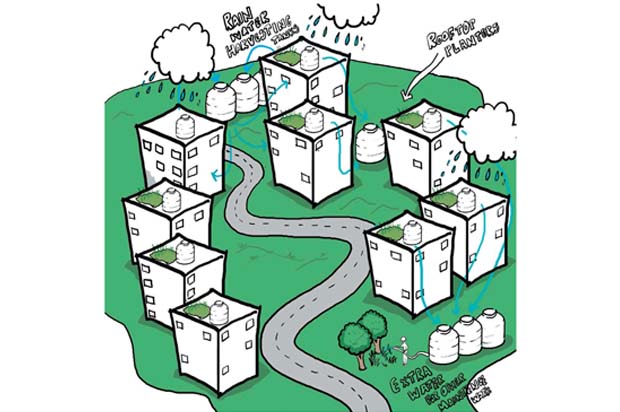On July 24, 2013 the dark grey sky came down upon Dwarka. A record-setting 60 mm of monsoon rain poured heavily on the streets of Dwarka, southwest Delhi. At the same time, the DELHi2050 team, while trying to set up a public exhibition under umbrellas, spoke to several angry residents of the Jhelum Arorvanch Apartments. The key reason for their fury was that all the precious rain water would disappear from their compound via storm drains and they would have to buy expensive but bad-quality saline water from tankers the next day.
Dwarka is a newly planned sub-city of the capital with a planned population of 1.2 million. It has the infrastructure, but a dramatically scant supply of water. With the current population of 0.5 million not getting more than 25% of their water requirement from the government, they resort to buying from water tankers. Under these alarming circumstances, residents themselves have started to look for solutions to the water crisis.
 |
 |
Historically, Dwarka has been built upon eight villages, which had 25 of their own water bodies that were an important source of water. In June 2013, with the support of the Pochampur village residents, Diwan Singh took the initiative to revive these water bodies. He successfully spearheaded the revival of the first water body by diverting the storm water drains into the dried up Naya Johad, which filled up during the monsoon. The surrounding land was cleaned up, native vegetation and trees were planted and the land-use designation was changed to forest land, which means that project developers will not be able to build there in the future. By doing all of this, he was able to create a beautiful public area and also counter rapid ground water depletion. Another project was started by INTACH, Delhi’s Natural Heritage division in 2012. Using bio-remediation techniques, which use natural methods (introducing fish, water hyacinth, bacteria etc.) to treat sewerage, INTACH implemented this on a 4 km stretch of the Palam drain. The drain carries 140 million gallons of wastewater per day through the middle of Dwarka.
While all that precious rain water would disappear from their compound via storm drains, they would have to buy expensive but bad-quality saline water from the tankers
On May 16, 2013, Arch i-Platform’s Kushal Lachhwani organised a workshop at the School of Planning and Architecture, New Delhi, where with 20 professors and students, Dr Meenakshi Dhote, one of the original planners of Dwarka, elaborated upon the basic tenets on which Dwarka was designed. During the brainstorming, she expressed how some of the starting points for planning, though not implemented, could still be incorporated into the existing plan. During this workshop ‘Dwarka & Water’ was identified for the next step.
The key starting points of this plan were:
1. Reduce water demand and increase supply of water
2. Design solutions that are innovative and low-tech
3. Work on all levels: the urban, the societal and the individual

 |  |
In keeping with the spirit of public participation by Arch i-Platform, the DELHi2050 team took to the streets and held four public exhibitions in Dwarka. Their intention was to bring the planning process into the public realm, have debates, sensitise people about the ongoing efforts in Dwarka and to share techniques of managing water at the societal and individual levels. Based on simplified explanations and graphics, accessible language, sound logic and breaking down seemingly Herculean tasks to simple achievable processes, any stigma and apprehensions were removed. The local radio station was so enthusiastic about the ‘pro-people’ working method that Radio Dwarka aggressively broadcast interviews to explain the message of self-sufficiency.
The key lesson is that it is possible to avoid waiting for official urban mechanisms
The initiatives are bearing fruit! Diwan Singh received the green light from the Government to revive six more water bodies and INTACH reduced the foul smell which was emanating from the Palam drain and is set to take up the treatment of the entire drain. Using radio and the internet (Radio Dwarka and www.DELHi2050.com) to reach close to 75,000 people, many housing societies in Dwarka expressed interest to learn how to implement water management techniques. Three of them have invited the DELHi2050 team, that included all stakeholders, to design a better water management system for them. By investing their time and money in a system that can make them less dependent on external water sources and supplementing almost 25% of the water needed (used for flushing, gardening, cleaning), they will have a positive impact on their families.
The activated populace of Dwarka might be able to take long strides in ensuring a less water-stressed future. If successful, others will follow. But the key lesson is that it is possible to avoid waiting for official urban mechanisms. It is possible with pro-people, inclusive initiatives to address a very urgent basic need and secure water for a better and healthier future.
All photos: Anne Feenstra and Saumitra Sinha




Comments (0)